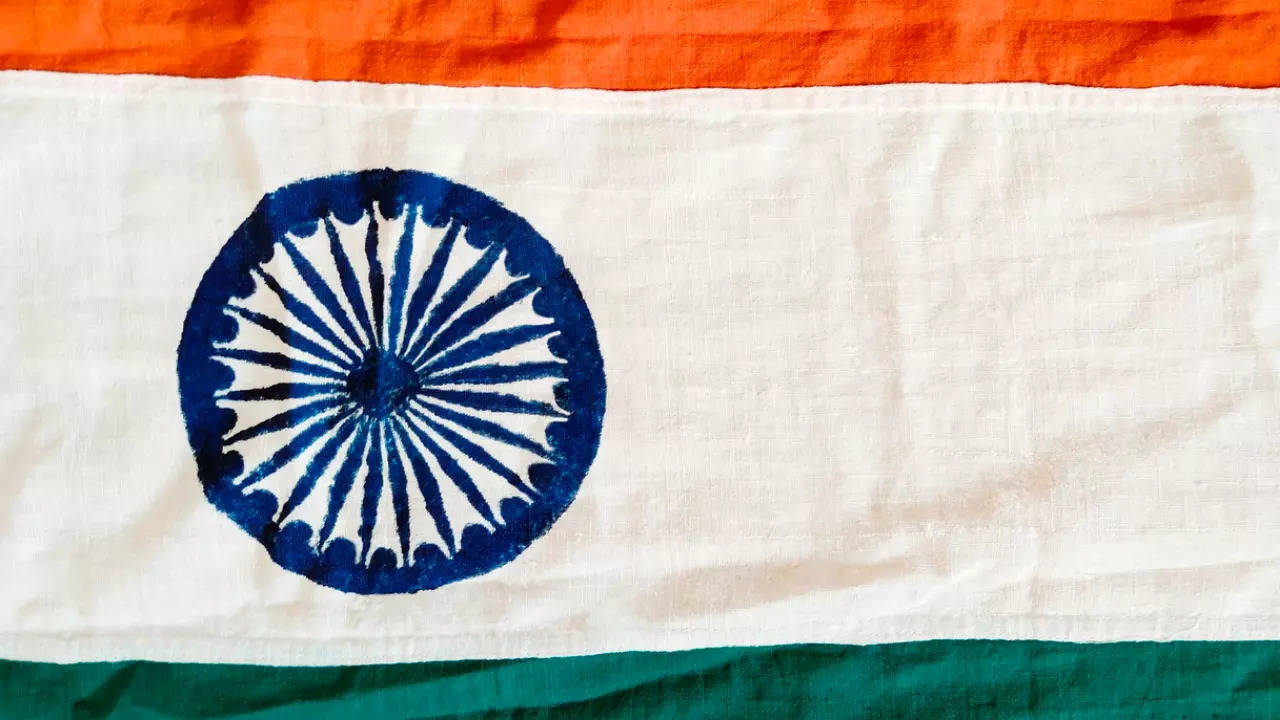[ad_1]
Indian Independence Day, celebrated on August 15th each year, is a momentous occasion that marks the end of British colonial rule and the birth of the sovereign nation of India in 1947. One of the most profound and symbolic connections to this historic day lies in the fabric of Khadi. Khadi, often referred to as the ‘fabric of freedom,’ played a pivotal role in India’s struggle for independence and continues to hold immense cultural and historical significance.
Khadi, a handwoven and handspun cloth made from natural fibers, emerged as a powerful symbol of resistance against British colonial economic exploitation. Under British rule, India’s textile industry suffered immensely, as the British imposed heavy taxes on Indian textiles and promoted the export of raw materials, causing unemployment and poverty among Indian weavers. The import of British manufactured textiles further weakened the indigenous industry.
In the early 20th century, Mahatma Gandhi recognized the potential of Khadi to serve as a tool for economic empowerment, self-reliance, and unity among Indians. He believed that Khadi could provide a means of livelihood for rural artisans and promote self-sufficiency, reducing India’s economic dependence on foreign goods. Gandhi’s philosophy of ‘Sarvodaya’ (welfare for all) was deeply intertwined with Khadi, emphasizing its role in uplifting the marginalized sections of society.
During the Non-Cooperation Movement and the Quit India Movement, Gandhi encouraged Indians to boycott British goods and adopt Khadi as a form of protest. The act of spinning the Charkha (spinning wheel) and weaving Khadi became a visual representation of self-sufficiency and defiance against British rule. This symbolism resonated with people across India and played a pivotal role in mobilizing masses for the independence movement.
The Salt March of 1930, led by Gandhi, saw the participants donning Khadi as a mark of unity and defiance. The march’s conclusion with the symbolic act of making salt from seawater using Khadi marked a significant moment of civil disobedience against British salt taxes. The image of Gandhi, clad in his humble loincloth and spinning Khadi, became an iconic representation of India’s fight for freedom.
Even after India gained independence, Khadi continued to be a symbol of self-reliance, national pride, and social upliftment. The Khadi and Village Industries Commission (KVIC) was established to promote Khadi production and provide employment to rural artisans. The legacy of Khadi has been upheld by successive governments, celebrities, and citizens who wear Khadi to honor the spirit of independence and support local artisans.
Khadi has transcended its historical significance to become a fashion statement and a sustainable lifestyle choice. In contemporary times, Khadi has been reimagined by fashion designers who have incorporated its timeless appeal into modern designs, merging tradition with innovation. The texture, comfort, and eco-friendliness of Khadi have contributed to its resurgence as a favored fabric among environmentally conscious consumers.
On Indian Independence Day, the sight of political leaders, citizens, and even schoolchildren donning Khadi attire pays homage to the sacrifices made by those who fought for India’s freedom. The Charkha remains a symbol of self-reliance and resilience, reminding us of the power of unity and the indomitable spirit that led to India’s liberation from colonial rule.
The connection between Indian Independence Day and Khadi is a testament to the fabric’s historical importance and enduring relevance. Khadi’s role in the struggle for freedom, its embodiment of self-reliance, and its contribution to sustainable fashion make it a living tribute to India’s journey towards sovereignty. As the nation celebrates its independence, Khadi stands as a tangible link to the past while inspiring a better and more self-reliant future.
Khadi, a handwoven and handspun cloth made from natural fibers, emerged as a powerful symbol of resistance against British colonial economic exploitation. Under British rule, India’s textile industry suffered immensely, as the British imposed heavy taxes on Indian textiles and promoted the export of raw materials, causing unemployment and poverty among Indian weavers. The import of British manufactured textiles further weakened the indigenous industry.
In the early 20th century, Mahatma Gandhi recognized the potential of Khadi to serve as a tool for economic empowerment, self-reliance, and unity among Indians. He believed that Khadi could provide a means of livelihood for rural artisans and promote self-sufficiency, reducing India’s economic dependence on foreign goods. Gandhi’s philosophy of ‘Sarvodaya’ (welfare for all) was deeply intertwined with Khadi, emphasizing its role in uplifting the marginalized sections of society.
During the Non-Cooperation Movement and the Quit India Movement, Gandhi encouraged Indians to boycott British goods and adopt Khadi as a form of protest. The act of spinning the Charkha (spinning wheel) and weaving Khadi became a visual representation of self-sufficiency and defiance against British rule. This symbolism resonated with people across India and played a pivotal role in mobilizing masses for the independence movement.
The Salt March of 1930, led by Gandhi, saw the participants donning Khadi as a mark of unity and defiance. The march’s conclusion with the symbolic act of making salt from seawater using Khadi marked a significant moment of civil disobedience against British salt taxes. The image of Gandhi, clad in his humble loincloth and spinning Khadi, became an iconic representation of India’s fight for freedom.
Even after India gained independence, Khadi continued to be a symbol of self-reliance, national pride, and social upliftment. The Khadi and Village Industries Commission (KVIC) was established to promote Khadi production and provide employment to rural artisans. The legacy of Khadi has been upheld by successive governments, celebrities, and citizens who wear Khadi to honor the spirit of independence and support local artisans.
Khadi has transcended its historical significance to become a fashion statement and a sustainable lifestyle choice. In contemporary times, Khadi has been reimagined by fashion designers who have incorporated its timeless appeal into modern designs, merging tradition with innovation. The texture, comfort, and eco-friendliness of Khadi have contributed to its resurgence as a favored fabric among environmentally conscious consumers.
On Indian Independence Day, the sight of political leaders, citizens, and even schoolchildren donning Khadi attire pays homage to the sacrifices made by those who fought for India’s freedom. The Charkha remains a symbol of self-reliance and resilience, reminding us of the power of unity and the indomitable spirit that led to India’s liberation from colonial rule.
The connection between Indian Independence Day and Khadi is a testament to the fabric’s historical importance and enduring relevance. Khadi’s role in the struggle for freedom, its embodiment of self-reliance, and its contribution to sustainable fashion make it a living tribute to India’s journey towards sovereignty. As the nation celebrates its independence, Khadi stands as a tangible link to the past while inspiring a better and more self-reliant future.
[ad_2]
Source link













































